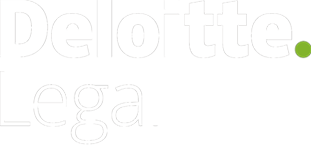21st Century Cures And Life Sciences Innovation.
The 21st Century Cures Act could revolutionize the development of pharmaceuticals and medical devices. But life sciences companies who don't act now risk being left behind.
Modernizing the approvals process
After almost three years of public meetings, debates, and consensus building, the 21st Century Cures Act (Cures) became law on December 12, 2016. The bipartisan legislation allocates a total of $6.3 billion to advance medical research to fund basic science research at the National Institutes of Health (NIH) and allow for innovation and flexibility for product regulation at the Food and Drug Administration (FDA). Other provisions target health information technology (HIT) and public-health priorities. The major provisions of Cures that pertain to pharmaceutical and medical technology product development, regulation, and approval include:
- Striving for faster drug approvals using new classes of evidence and adaptive frameworks
- Communicating among stakeholders around health care economic information
- Advancing medical device innovation
- Creating regulatory clarity for combination products
- Regulating medical software and HIT
- Establishing a pathway for regenerative medicine
The Cures Act creates an opportunity for the FDA to continue to evolve regulatory programs by applying more recent advances in technology and analytics to update scientific and evidentiary models. Moreover, the new administration's focus on reducing regulatory burden could spur agencies to move toward a more collaborative, adaptive approach to regulating therapies and create regulatory flexibility that also ensures patient access and public safety.
In many ways, the drug, device, and diagnostic development and approval process of yesterday is over. Life sciences companies risk being "out of date" and competitively disadvantaged if they aren't pursuing the newer breakthrough, priority, or accelerated pathway included in Cures and some of the initiatives the FDA has developed in the past several years. As the industry aims to meet the evolving needs of stakeholders (patients, health care providers, and health plans), this regulatory flexibility will be imperative in driving both regulatory approval and market access.
Provisions and potential implications for biopharma and medtech
Please click on the table to enlarge.
Looking ahead
To take advantage of the evolving regulatory landscape, our research and discussions with industry stakeholders suggest that life sciences companies should consider:
- Engaging in early discussions with the FDA to design clinical trials that incorporate surrogate endpoints and other tools to shorten drug development timelines
- Expanding capabilities to access, collect, and analyze RWE and patient experience data
- Continuing to work with the FDA, patient advocacy groups, and provider organizations to delineate pathways for patient and caregiver involvement
- Expanding the dialogue on economic evidence between biopharma and medical device companies and health care stakeholders, including payers
- Taking advantage of additional regulatory clarity by investing in breakthrough devices, point of care (POC) diagnostics, drug-device combination products, and regenerative medicine
- Advancing the conversation on the regulation of medical software in collaboration with the FDA and other industry stakeholders.
Few stakeholders would argue that the time it takes to develop a new therapy and get it to market is sufficient for patients and families who are waiting for innovative treatments that cure disease or turn life-threatening diseases into manageable conditions. Life sciences companies and the FDA are working to overcome barriers and evolve their programs through integrating recent advances in technology and analytics. It’s critical that all key stakeholders continue to collaborate toward delivering better care and innovative therapies.
key contact

Jim Jamison
Partner
Hongkongjimjamison@deloittelegal.com.hk


